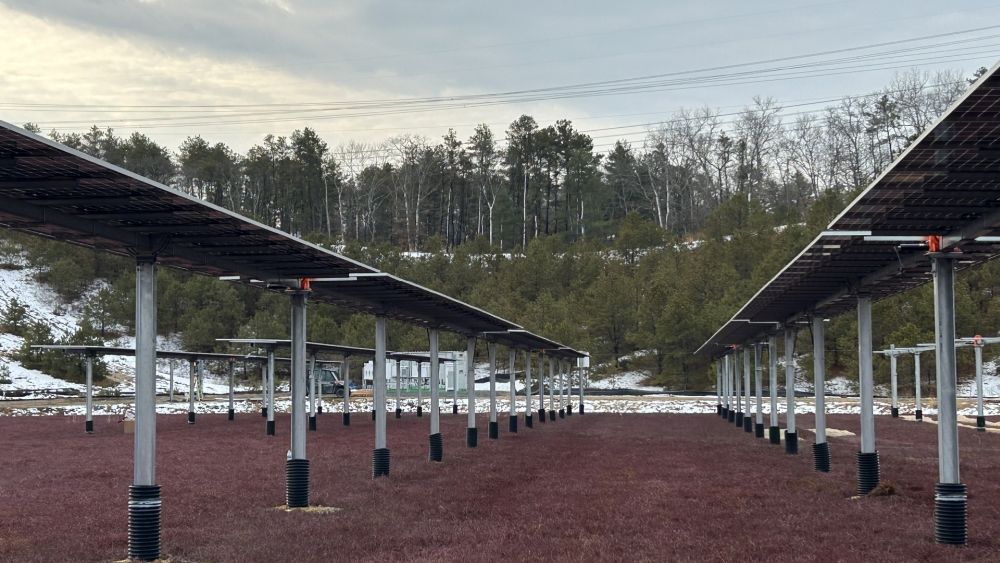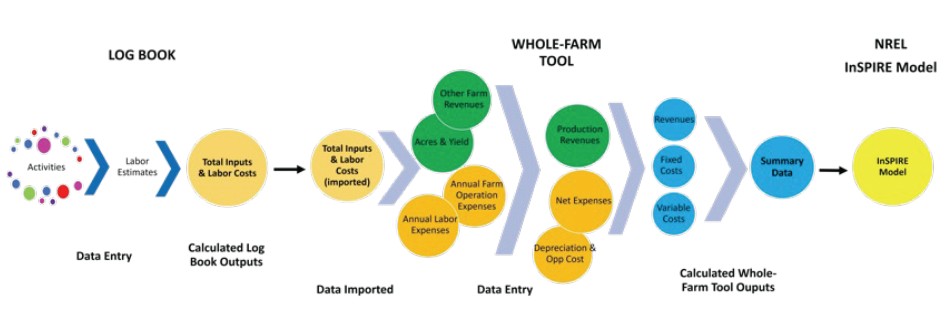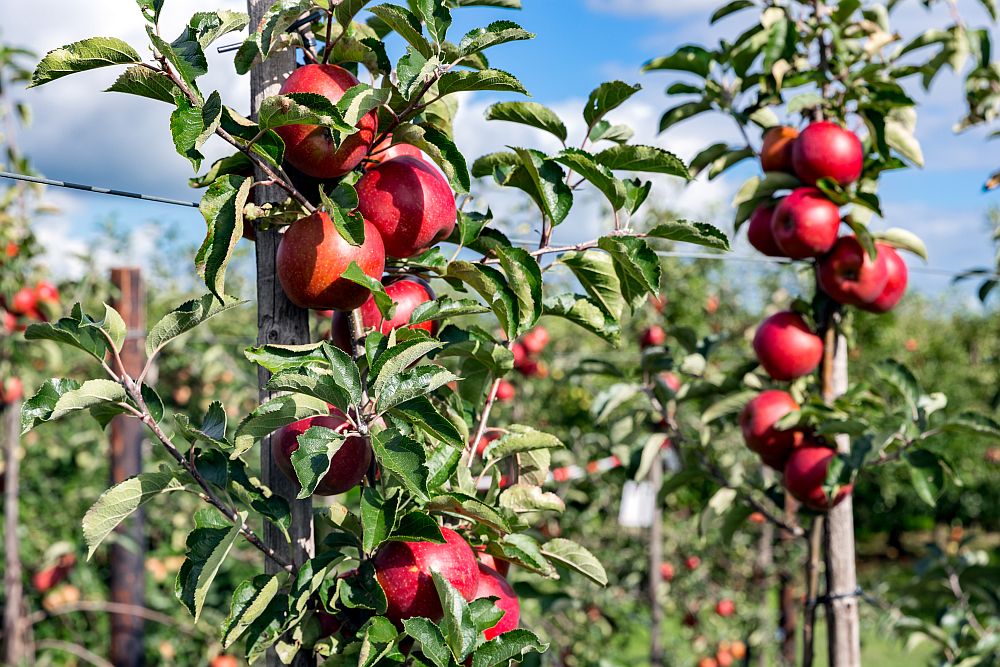
[Image above] Solar arrays in a cranberry bog in Plymouth, Mass. Two new spreadsheet-based tools developed by researchers at the University of Massachusetts Amherst can estimate costs, revenues, and yields from agricultural production under agrivoltaics. Credit: University of Massachusetts Amherst
Despite some pushback, the budding practice of agrivoltaics, or the co-location of raised solar panels on agricultural fields, is starting to see comparatively high acceptance among the general public compared to conventional open-space solar systems. This sentiment reflects the growing number of scientific studies finding support for its benefits.
However, implementing agrivoltaics in such a way to realize its benefits is not a cut-and-dry process. The success of a crop under an agrivoltaic system depends on many factors, including the soil and climate conditions of a given location, which can change year by year.
To help farmers make the best use of this nascent technique, two researchers at the University of Massachusetts Amherst recently published an open-access paper that provides two spreadsheet-based tools for estimating costs, revenues, and yields from agricultural production under different configurations of agrivoltaic installations.
The first tool is a crop-specific logbook to analyze farm-level activities, and the second tool is a whole-farm spreadsheet to calculate aggregate projections for trade-offs between crop production with or without agrivoltaics. Together, the tools consider everything from different solar technologies and crop spacing to labor costs and extra fuel to navigate farm equipment around solar panels.
The tools were designed based on lettuce and cranberry production, but a university press release notes that they “can be modified easily for other field and perennial crops.”
Download the tools for free on the journal paper webpage: https://open.clemson.edu/joe/vol62/iss3/12.

Schematic showing how the two spreadsheet-based tools work together to estimate costs, revenues, and yields from agricultural production under agrivoltaics. Credit: Fitzsimmons and Kim, Journal of Extension (CC BY-NC-SA 4.0)
According to the university press release, the spreadsheets were developed as part of a larger ongoing project funded by the Department of Energy at UMass Amherst. This project involves researchers from the Center for Agriculture, Food, and the Environment and its Clean Energy Extension working with farmers across Massachusetts to determine how co-located solar arrays affect agriculture.
The open-access paper, published in Journal of Extension, is “Agrivoltaic decision tools for perennial and field crop farmers.”
Author
Lisa McDonald
CTT Categories
- Energy
- Environment


